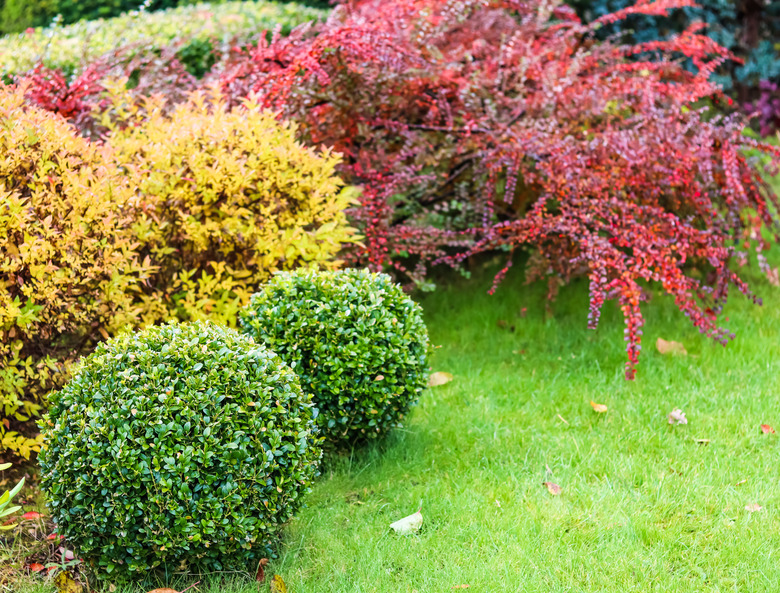Get Rid Of Insect Pests On Boxwood Bushes
Is your boxwood (Buxus spp.) being munched by mystery insects? Boxwood bushes adapt well to a variety of light conditions as long as they have fertile soil that drains well. However, they can be bothered by three main types of pests, with damage ranging from superficial to killing the bushes. Identifying your pest helps you determine how to treat your boxwoods to save them.
Boxwood Leafminer Pests
Boxwood Leafminer Pests
The boxwood leafminer (Monarthropalpus buxi) has the most potential for serious damage to your boxwoods. The yellowish-white larvae and orange-yellow flies measure about 1/8 inch long. Females lay their eggs in the leaf tissue, and the hatching larvae eat the plant material inside the leaves, creating mines.
The leaves look blistered with irregular, discolored patches because of this internal damage. They don't generally grow as large as healthy leaves, and they might fall off the plant sooner than normal. In serious cases, the pests can kill the boxwood.
A pesticide-free way to control boxwood leafminers is to prune the affected leaves and destroy them before the eggs hatch. If you prefer pesticides, use sprays containing acephate or spinosad, which are foliar systemic insecticides, to kill the pests while they're in the mines. Contact pesticides containing malathion can help against the adults when applied from mid-April to early May. You can also use soil treatments containing dinotefuran or imidacloprid.
Boxwood Psyllid Pests
Boxwood Psyllid Pests
Another common boxwood pest is the boxwood psyllid (Cacopsylla busi). About 1/8 inch long, the green adults feature clear wings, but they can also jump. Adult psyllids lay small orange eggs, which overwinter and hatch in the spring. Nymphs and adults feed off the leaves by sucking their sap, but the adults aren't as damaging as the nymphs.
This pest doesn't destroy the bush like other pests. Instead, the damage that it causes is just aesthetic. You'll likely notice the leaves cupping. These pests can also affect the growth of the twigs. Only one generation of boxwood psyllids grows per year.
You typically only need to use pesticides if the psyllid infestation is bad. A spray containing acephate can help. If you prefer to use a soil treatment, products containing dinotefuran or imidacloprid can help control psyllids.
Boxwood Mite Pests
Boxwood Mite Pests
A boxwood mite (Eurytetranychus buxi) is a type of spider mite that can appear yellow-brown to green and is only about 1/64 inch long, making them very difficult to see, even with a magnifying glass. Japanese boxwoods are typically more resistant to these mites. They lay greenish or yellowish eggs on the underside of the leaves, and the eggs overwinter and hatch in the spring.
The leaves of affected boxwoods usually look like they have pin pricks, or they have stippling, caused by toxic saliva injected when the mites suck sap from the leaves, appearing as little white or yellow spots. The damage is mostly superficial and won't kill the bush. Mite issues become worse when it's dry or dusty, and there are several generations each year, sometimes up to eight or more.
It's best to avoid pesticides if you have a mite issue in your boxwoods. The pesticide will also kill the beneficial insects, like predatory mites, that help keep the boxwood mites under control. You can order predatory mites and release them on your boxwoods to control the boxwood mite population naturally. Boxwood leafminers are also predators of boxwood mites, so when you treat the leafminers, you might notice an increase in mites.
Spraying the boxwoods with a steady stream of water from your garden hose can knock the mites off the bushes. Applying insecticidal soap or horticultural oil can also help control boxwood mites. Apply it in the summer, following the label instructions.
